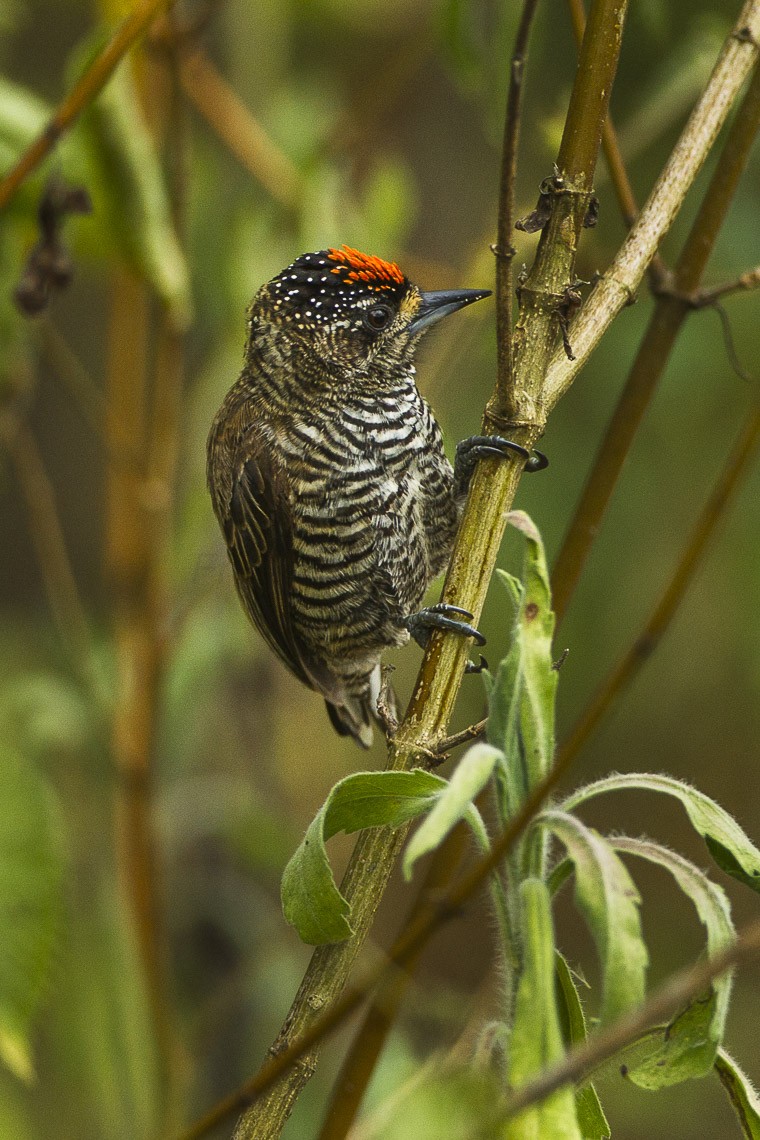White-barred Piculet
A species of American and Speckled Piculets Scientific name : Picumnus cirratus Genus : American and Speckled Piculets
White-barred Piculet, A species of American and Speckled Piculets
Botanical name: Picumnus cirratus
Genus: American and Speckled Piculets
Content
Description General Info
 Photo By Francesco Veronesi , used under CC-BY-SA-2.0 /Cropped and compressed from original
Photo By Francesco Veronesi , used under CC-BY-SA-2.0 /Cropped and compressed from original Description
The white-barred piculet is between 9 and 10 cm (3.5 and 3.9 in) long. The sexes differ in that the male has red streaks or a solid red patch on the fore-crown, while the female lacks this. The rest of the crown is black, speckled with white. The upper parts of the body are tan or olive-brown, faintly barred with white, and the main flight feathers are chocolate brown. The ear coverts and cheeks are olive brown and there is a white streak above or behind the eye. The lower cheeks, chin and throat are white, faintly barred with black. The underparts are white or cream, boldly barred with black, the broadest stripes being on the belly and flanks. The tail is chocolate brown apart from the central pair of feathers which are white, and the two outer pairs which have the inner webs white near the tip. The iris is brown, the orbital ring bluish-grey, the beak black and the legs grey. 
Size
10 cm
Nest Placement
Cavity
Feeding Habits
White-barred Piculet primarily eats small insects, such as ants, larvae, and wood-boring beetle eggs, and may consume sap. It forages alone at various heights or with flocks, using a hammering technique to excavate food. White-barred Piculet is known to forage on twigs, vines, and bamboo, often moving nuthatch-like.
Habitat
White-barred Piculet inhabits a diverse range of environments in South America, favoring wet and dry woodlands, forest fringes, and scrublands. Versatile in nature, it adapts to both primary and secondary growth areas, including overgrown parks and even modified landscapes like Eucalyptus plantations with native undergrowth. Present from sea level to mountainous regions at elevations up to 2,200 meters, white-barred Piculet is a non-migratory resident across its widespread habitat.
Dite type
Insectivorous
General Info
Feeding Habits
Bird food type
Distribution Area
There are two different sub-populations of this bird on either side of the equator in South America. The northerly population is in Guyana, northwestern French Guiana and northern Brazil. The southern population is in southeastern Brazil, eastern Bolivia, eastern Paraguay and northern Argentina. The white-barred piculet occupies various habitats including wet and dry woodland, forest verges, thickets, gallery forests, wooded savannah, scrub, bamboo clumps, vines, creepers and overgrown parks and gardens at elevations of up to about 2,200 m (7,200 ft). It is a resident, sedentary species. 
Species Status
Not globally threatened.